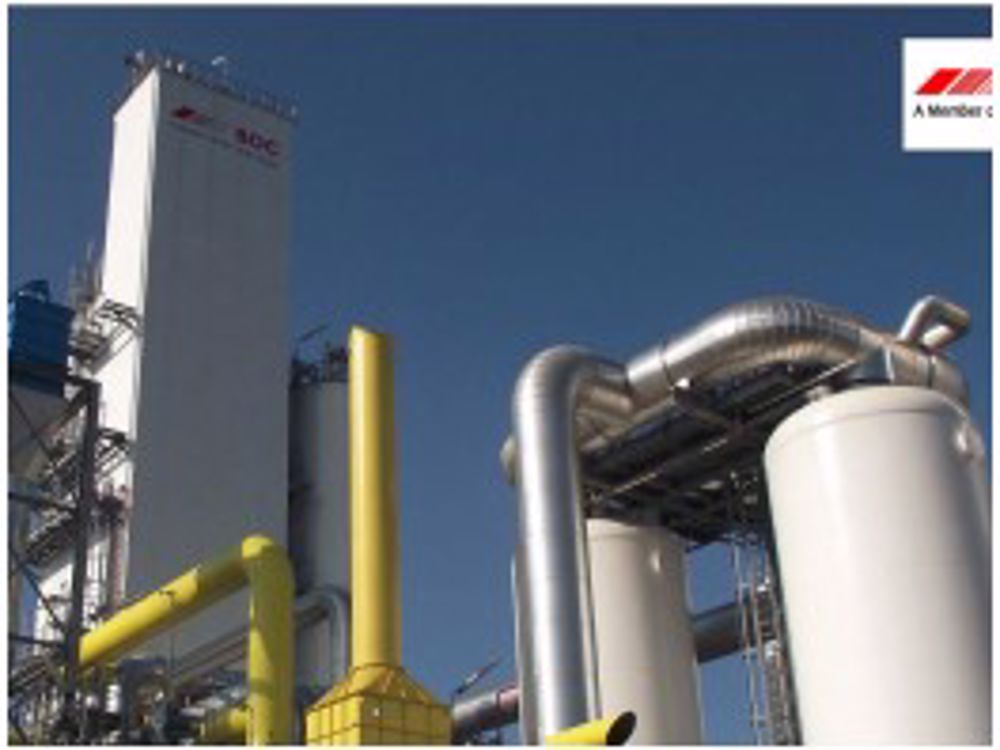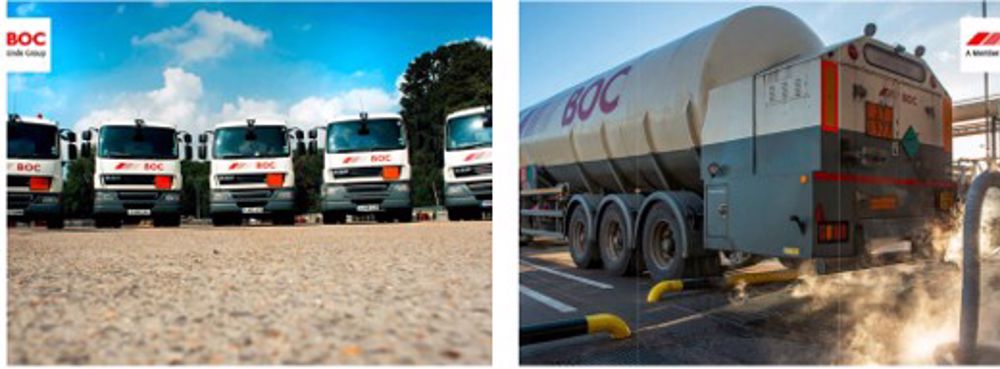Oxygen and other Industrial Gases
It was a crisp winter's day when as the works manager I was sitting with George Kynman, a bright interesting man in his 70s, at the Christmas dinner we held for our pensioners in the offices of our large industrial gases complex at the heart of the Teeside industrial area. George suddenly recollected "Do you know it is 50 years since we started oxygen production on Teesside ?".
He recalled the day the first two small plants were delivered to the brownfield site north of the River Tees.
In the early 1900s requirement for oxygen had been limited but the emergence of air separation plant had supplanted the crude chemical methods of the late Victoria age.
The plants George Kynman now saw when he came for his Christmas dinner were very different. The output of this works was a thousand times the size of the one George had known in the early days. The old machines which more resembled the Victorian steam days were replaced by massive turbo machinery which together consumed as much power as a town. The oxygen and nitrogen gases were distributed throughout the great industrial area by pipeline to steelworks, chemical plants and factories. More than 1000 tons of liquefied gases were stored in massive insulated tanks. A large fleet of road tankers delivered liquified gases to industry and hospitals throughout the north while cylinders were carried by lorry to smaller customers.

The control room housed the latest in pre-computer era control and monitoring. George recalled however that during World War 2 as German bombs rained over Teesside he had controlled the plant remotely from the air raid shelter to ensure the supplies vital to local industry kept flowing.
George had described the early days "A hectic hit-and-miss affair it was for the first few months. The general unpredictability of production was matched only by a chaotic unpredictability of demand." but now a 100% reliable 24/7 supply was demanded. With nitrogen to blanket potentially hazardous processes total reliability of supply with two levels of backup from liquid sources was the order of the day.
He recalled "The first liquid oxygen sold was in the mid 1920s to ICI. ICI thoughtfully collected the historical order themselves and it was handed over in three domestic thermos flasks packed in a biscuit tin lagged with sawdust"
George Kynman tells of supplying medical gases in the early days "Medical gases presented a bit of a problem in those days. For one thing demand was usually fairly small; for another most of the medical cylinders - 20 or 40ft3 - had to be delivered by train. This meant getting them to the station. At first a butcher's bike was used for the smaller orders and a hand cart for the bigger ones. Later the services of various small local contractors solved the problem and the bike and cart routine was thankfully dropped".

He now saw road tankers filled and product certified for medical use carrying liquid oxygen to hospitals where liquid oxygen storage fed oxygen throughout the hospital: supplies from plant to patient which had never failed. (and which have continued to provide a lifeline to the tragic victims of the current Corona pandemic.) I explained to him that though industrial uses can require the tightest limits on purity, medical quite rightly demands the most stringent control of quality and is subject to government inspection.
I told George that our products now had many uses.
Oxygen, essential for steelmaking, could now with thermal lances even cut through concrete and was being used to save polluted rivers. Liquid nitrogen because of its extreme cold was used for freezing food preserving its 'as picked' freshness, preserving 'medical ' specimens and nitrogen gas not only made flammable chemical works safe but filled aircraft tyres and had floated an oil rig before it was towed out to sea and sunk into position.
I showed him where we made argon, an essential gas used in high quality welding while krypton and xenon though available in relatively very small quantities were key ingredients in modern bulbs and electronic applications.
However when I had heard what George had described about the 50 years and the origins of our present complex it immediately dawned that this merited a customer event where we could join with our customers to celebrate the successes of the 50 years on Teesside. A large event was subsequently held where we were able to show our appreciation to our customers.